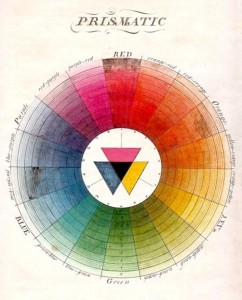
What is your favorite color? Statistically, blue is the most common answer, and yellow is among the least - just one more way in which I am unique I suppose! There are all sorts of facts and figures about how we perceive color and our emotional response, but what about the science behind color itself? Here's a quick lesson in color theory, taken from
this article on Printmag.com!
Are black and white actually colors? Most people might argue that black is a color and white is the absense of it - but in fact, the opposite is more accurate. Our eyes interpret color based on the effects of light -
for something to appear white, it means that ALL light is being reflected back to us, whereas objects that are black are absorbing the light completely, therefore giving of little or no reflection or color.
Light affects color in dramatic ways - like a painted wall that changes colors with the light of day, or the way two colors seem to "clash" when they are next to each other.
"When we say "your tie really clashes with that shirt", what exactly do we mean in color-theory terms? We're talking about a violation in the laws of color contrast. "Color deceives continually," wrote [Josef] Albers in his 1963 book Interaction of Color, "so optical illusions deceive. They lead us to 'see' and 'read' other colors than those with which we are confronted physically." ...The reason your tie clashes with your shirt probably stems from the two contrasting colors cranked to the same intensity - "contrasting" here meaning color-pairs across the color wheel, like orange and blue or yellow and purple."
Check out the
article for more, or do some color theory research on your own! It's an
interesting rabbit hole, to be sure, but at least it's a colorful one!